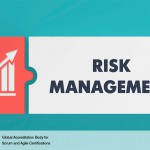Managing risk must be done proactively, and it is an iterative process that should begin at project inception and continue throughout the life of the project. The process of managing risk should follow some standardized steps to ensure that risks are identified, evaluated, and a proper course of action is determined and acted upon accordingly.
In a Scrum environment, risks are generally minimized, largely due to the work being done in Sprints whereby a continuous series of Deliverables is produced in very short cycles, Deliverables are compared to expectations, and the Product Owner is actively engaged in the project. However, even in the simplest of projects, things can go wrong, so it is important to have a strategy to identify and address risks. DeepL pro Crack
While some risks are specifically related to individual projects, others may originate in programs or portfolios and will generally be managed there itself. However, risks related to a portfolio or program will also impact projects that are part of the respective portfolio or program. During risk assessment in portfolios and programs, if it is determined that a risk may affect an individual project, relevant information about the risk must be communicated to the Product Owner and Scrum Team. Depending on the severity or priority, when the program or portfolio team communicates a risk that will impact an individual project, the Scrum Team may have to stop and re-plan the current Sprint to address the risk. For less urgent risks, the team can continue the current Sprint and address the risk in a subsequent Sprint. Express VPN Crack
In Portfolio
- When risks in Portfolio are identified, the Portfolio Product Owner will need to capture them and assess the proximity, probability, and impact of each identified risk in order to prioritize it and determine the appropriate response for the portfolio.
- The Portfolio Product Owner will also need to communicate the risks to the relevant stakeholders, the program teams, and the project teams. In some cases, the portfolio team may have to assume the ownership of specific risks.
In Program
- When program risks are identified, the Program Product Owner should enter them in the program Risk Adjusted Prioritized Product Backlog, assess the proximity, probability, and impact of each identified risk in order to prioritize it and determine the appropriate responses for programs.
- The Program Product Owner will also need to communicate the risks to relevant stakeholders and the project teams. In some cases, the program team would have to assume ownership of specific risks.
The following figure demonstrates how risks can be managed across the organization.










